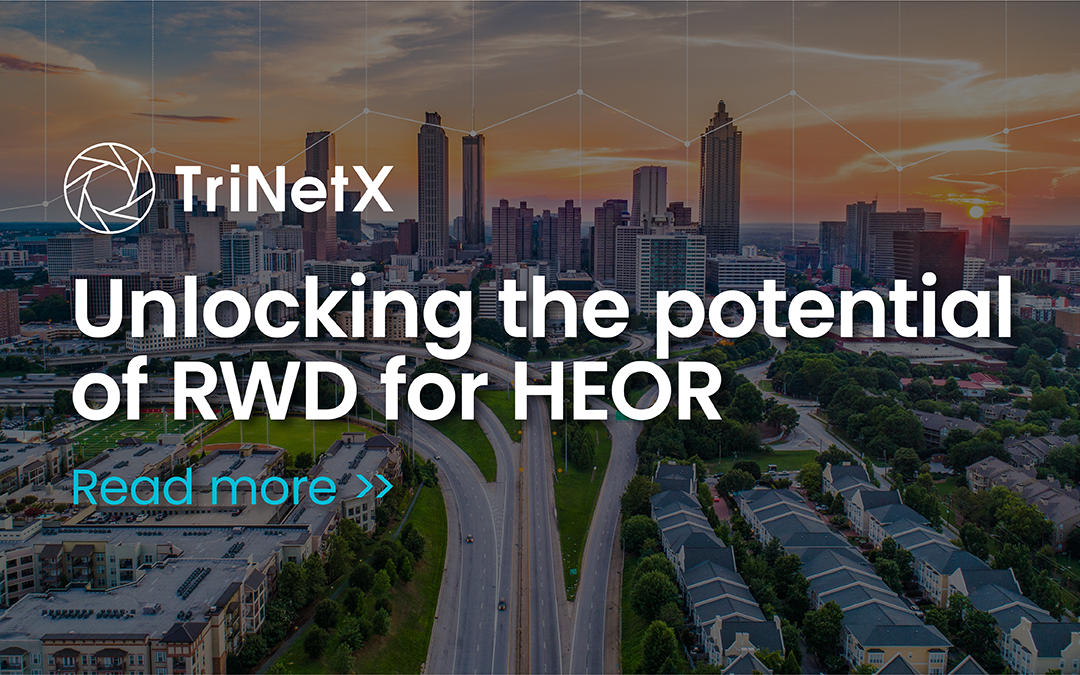Some of the most prominent and visible roles of real-world data (RWD) and real-world evidence (RWE) are regulatory and clinical decision-making and disease research. However, RWD and RWE have been growing in influence in many other areas of healthcare and in regions all over the world. One example is the impact on the health economics and outcomes research (HEOR) landscape.
Growing Impact of RWD and RWE in HEOR
An interesting new array of HEOR collaborations is being developed to address the many challenges countries and their health systems face. Regulators, payers, and providers are all looking to create partnerships that leverage existing and new data sources. This new thrust from the HEOR community has elevated the focus on and need for reliable RWD to generate necessary RWE.
The need for RWD in HEOR is expanding, however the need must be fulfilled with data of high quality and validity. There must be transparency and clarity of its original source and reliability of the data being analyzed. There is also a greater need for data to support longitudinal evaluations and research on new and emerging diseases, biomarkers, therapies, and technologies. We must also explore alternative data that have recently become available to help stakeholders understand new and existing medical products and their context. Finally, it is critical to get timely, efficient data streams that fuel the questions that most need answers today and inform the choices that may be available to stakeholders in the future.
Gathering More Data While Ensuring Privacy
Augmenting RWD sources is also necessary to better understand the patient’s perspective. Data aggregators have done a great service by showing that it is possible to gather large amounts of patient-level data and link them using solutions like tokenization. Although there are differences in sources and data quality, data aggregators must have a proven track record, be transparent in their linkage processes, and provide accurate statistics on their rates of matching patients across different sources.
As more data becomes available for HEOR research, we must continue to focus on ensuring individuals’ privacy. However, we must be careful not to put too many constraints on data collection and use, which makes it more difficult to answer the questions that ultimately help patients receive the optimal treatments specific to them. In the U.S., for example, if the aggregated data are certified as HIPAA compliant, we can be fairly confident that patient privacy is being protected.
Quality, transparency, and security need to be the watchwords in RWD. Working together, all partners in the HEOR data universe can overcome the current problems and ensure a better future. Our biggest enemies are complacency and inertia, and our biggest advantage is our willingness to take risks to benefit patients and society as a whole.
Discover the TriNetX Data Difference
At TriNetX, we’re revolutionizing HEOR through our unwavering commitment to providing unparalleled access to real-world data insights. Our cutting-edge LIVE™ platform, extensive data sets, and a team of seasoned experts empower researchers worldwide to unlock the transformative potential of real-world evidence.
What truly sets us apart is our dedication to delivering comprehensive analyses that illuminate current disease prevalence, treatment patterns, and market dynamics. Our US-based data leverages longitudinal patient-level data derived from electronic health records, with the capability to link to claims data, mortality information, and other data sources. Outside the US, our team of oncology experts leverages longitudinal, indication-specific patient-level data to offer unparalleled insights into the European oncology healthcare landscape. As the sole provider of comprehensive analyses from physician-supplied data on oncology care in Europe, we provide researchers with unique opportunities to delve deeper into their studies and drive impactful outcomes for patients and healthcare systems alike.
Attending the upcoming ISPOR conference in Atlanta on May 5? Meet with one of our experts on-site or click here to explore how our platform can transform your research initiatives.

